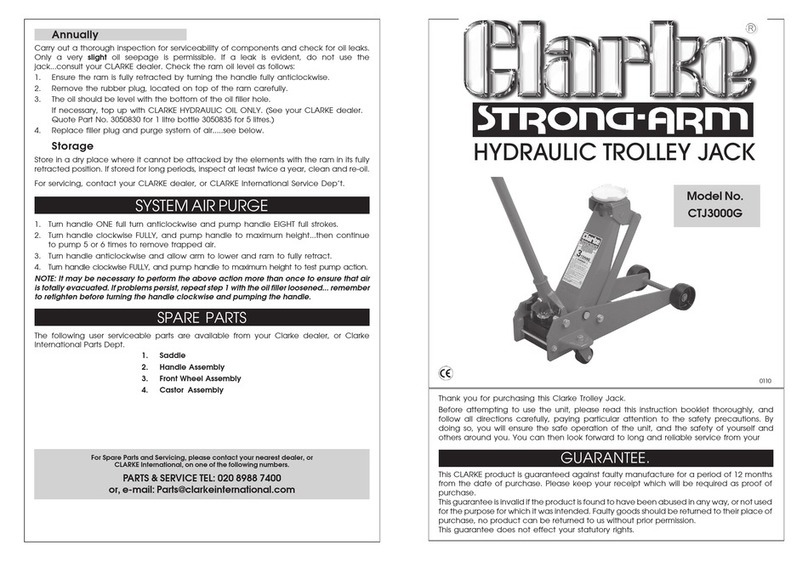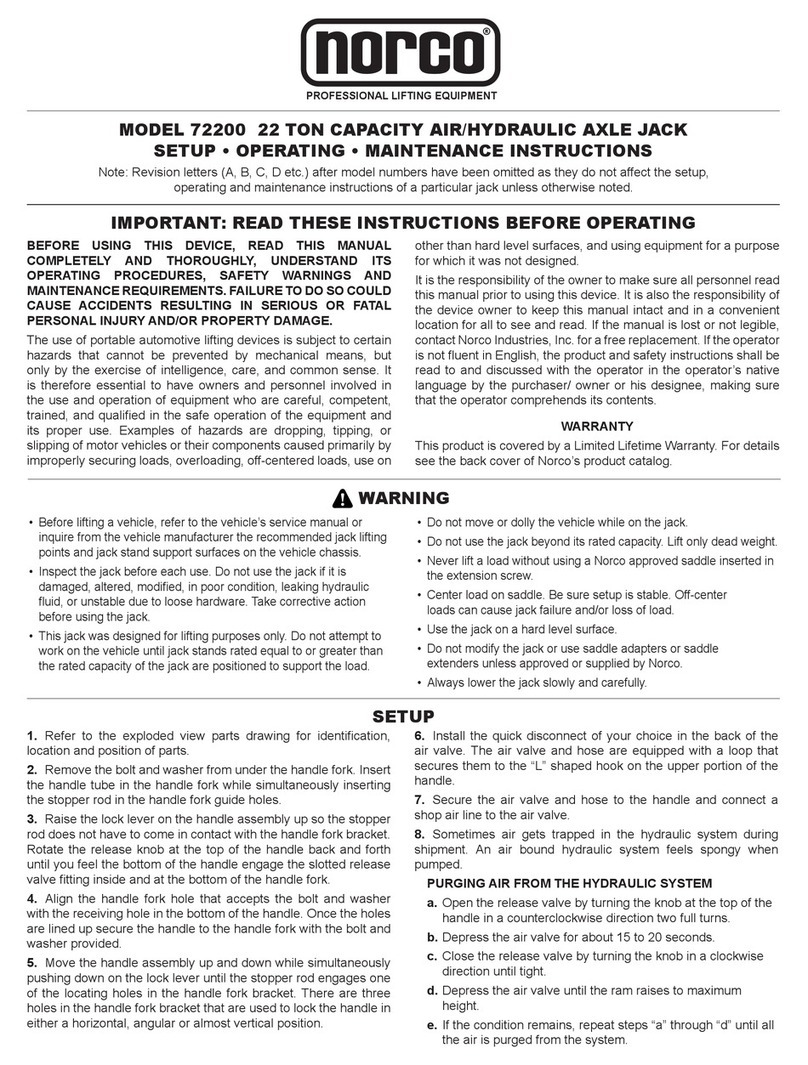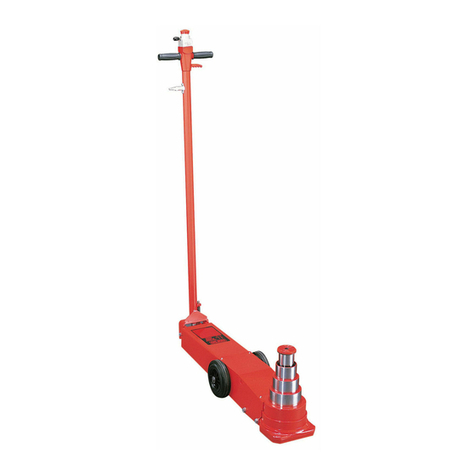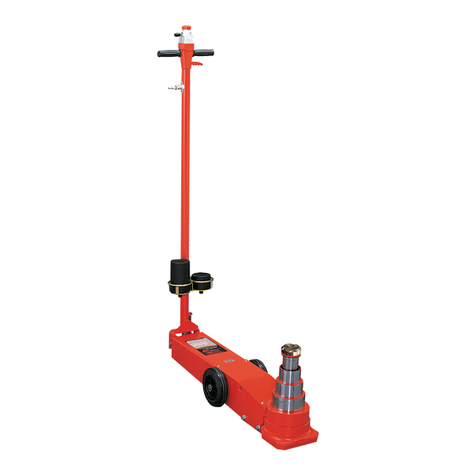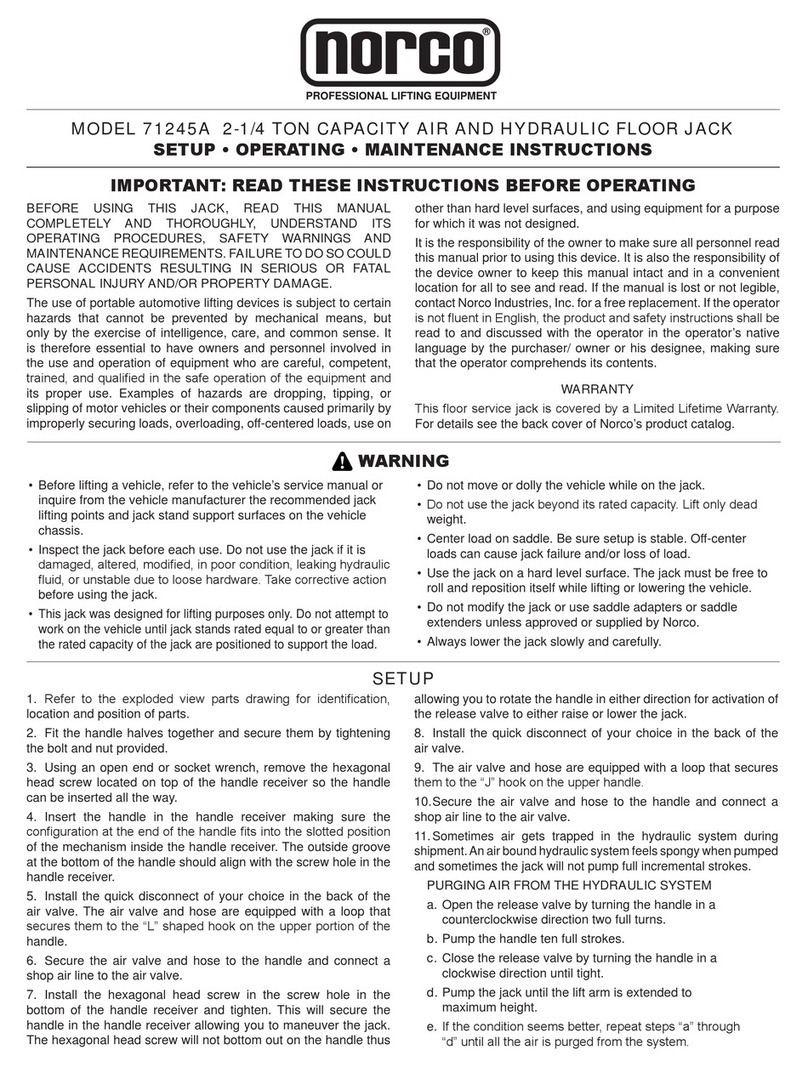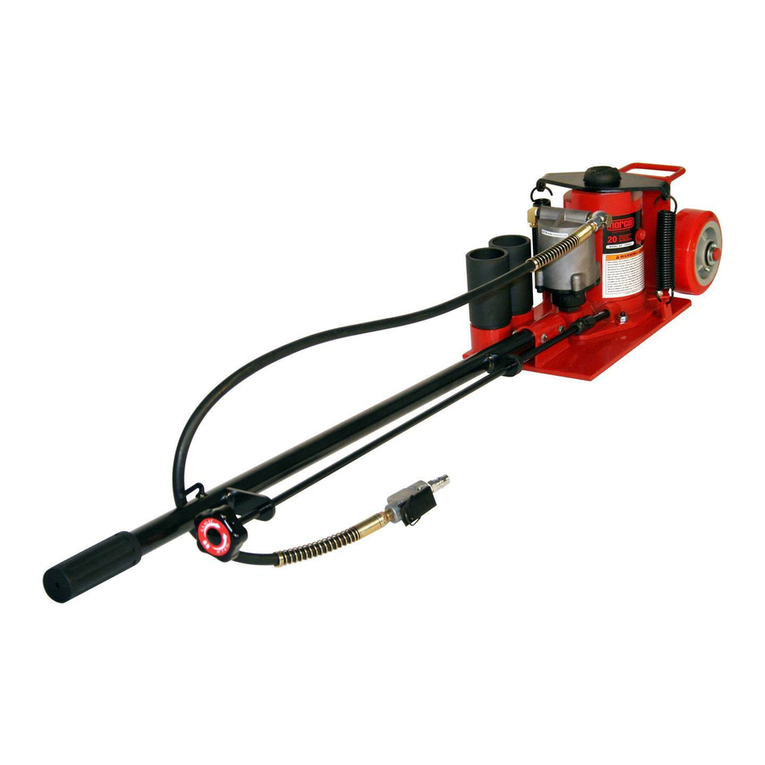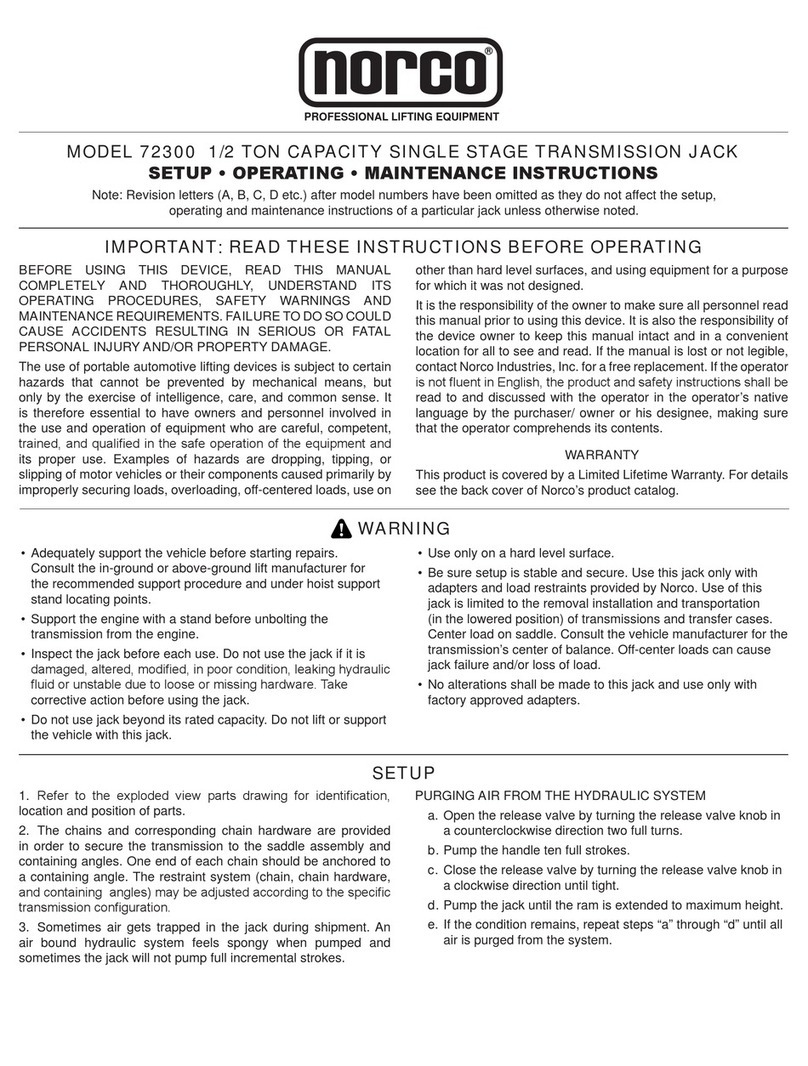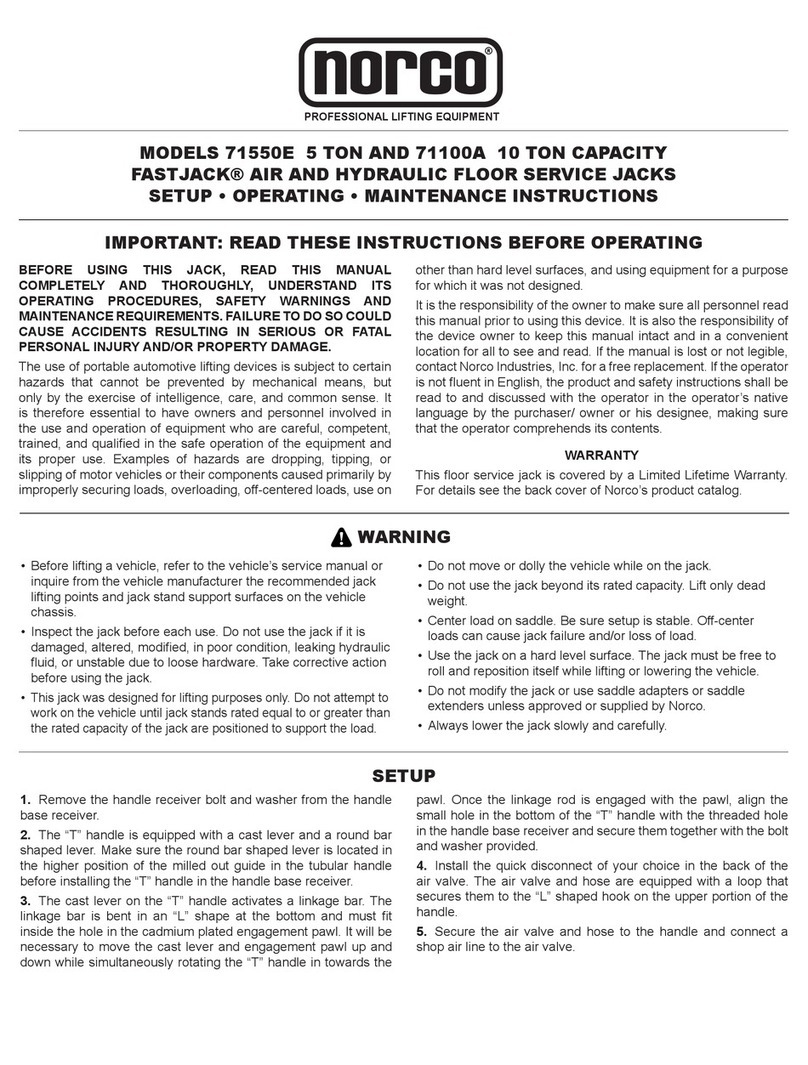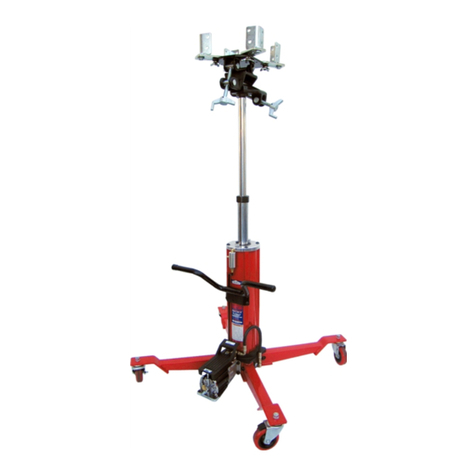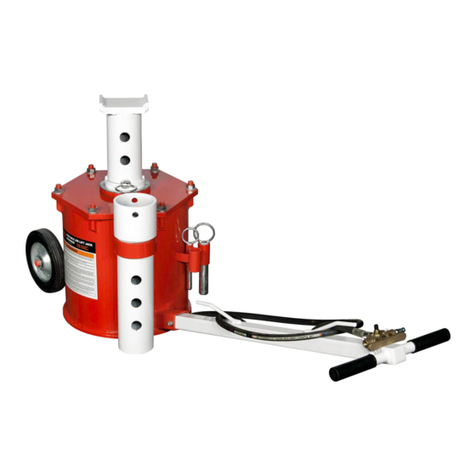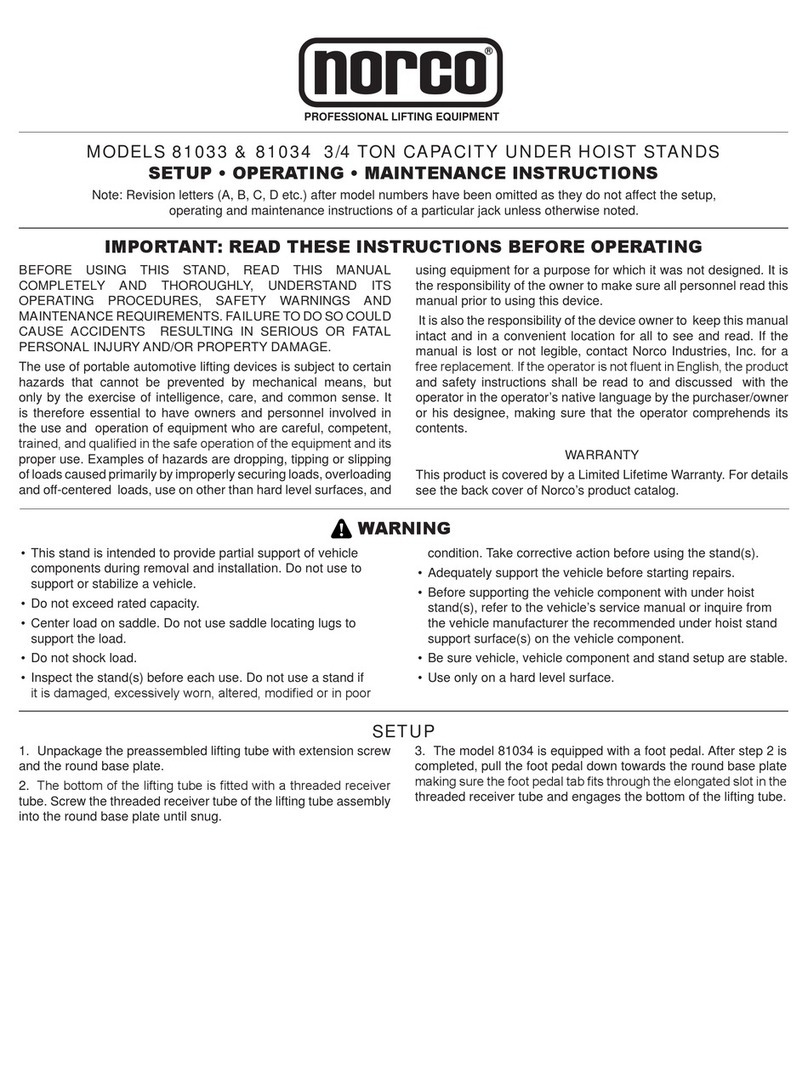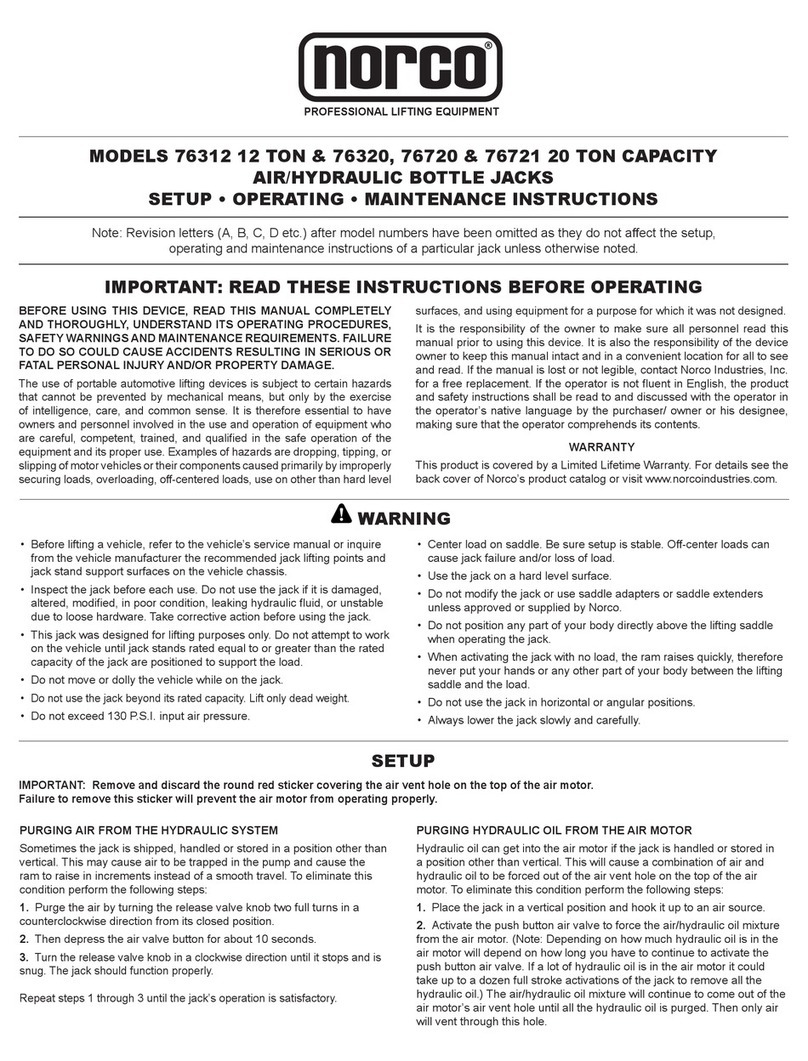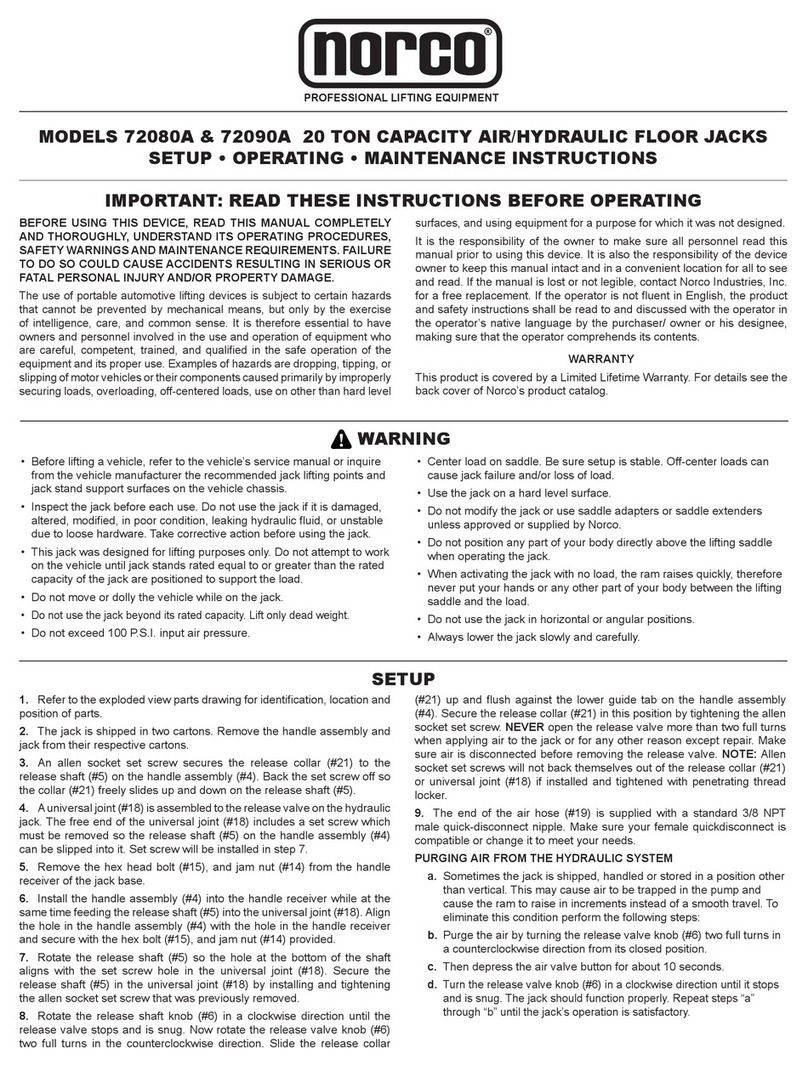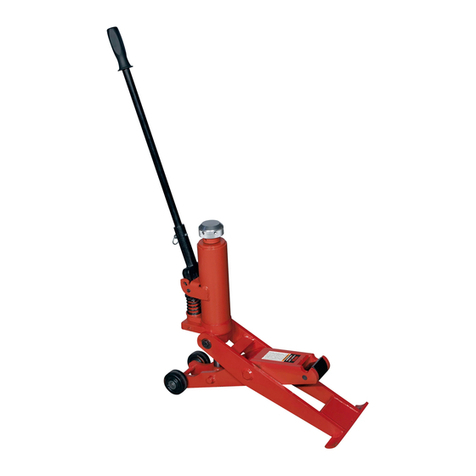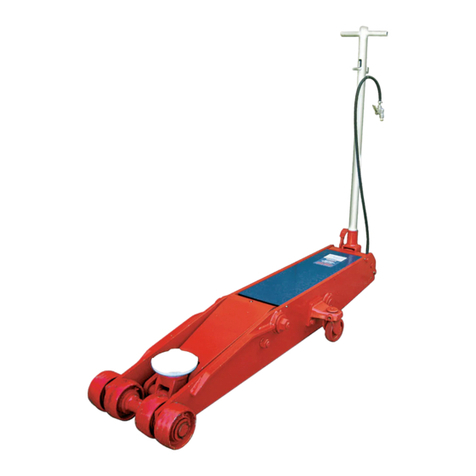
MODELS 76312A 12 TON & 76320A, 76720A & 76721 20 TON CAPACITY
AIR/HYDRAULIC BOTTLE JACKS
SETUP • OPERATING • MAINTENANCE INSTRUCTIONS
BEFORE USING THIS DEVICE, READ THIS MANUAL COMPLETELY
AND THOROUGHLY, UNDERSTAND ITS OPERATING PROCEDURES,
SAFETY WARNINGS AND MAINTENANCE REQUIREMENTS. FAILURE
TO DO SO COULD CAUSE ACCIDENTS RESULTING IN SERIOUS OR
FATAL PERSONAL INJURY AND/OR PROPERTY DAMAGE.
The use of portable automotive lifting devices is subject to certain hazards
that cannot be prevented by mechanical means, but only by the exercise
of intelligence, care, and common sense. It is therefore essential to have
owners and personnel involved in the use and operation of equipment who
are careful, competent, trained, and qualied in the safe operation of the
equipment and its proper use. Examples of hazards are dropping, tipping, or
slipping of motor vehicles or their components caused primarily by improperly
securing loads, overloading, off-centered loads, use on other than hard level
surfaces, and using equipment for a purpose for which it was not designed.
It is the responsibility of the owner to make sure all personnel read this
manual prior to using this device. It is also the responsibility of the device
owner to keep this manual intact and in a convenient location for all to see
and read. If the manual is lost or not legible, contact Norco Industries, Inc.
for a free replacement. If the operator is not uent in English, the product
and safety instructions shall be read to and discussed with the operator in
the operator’s native language by the purchaser/ owner or his designee,
making sure that the operator comprehends its contents.
WARRANTY
This product is covered by a One Year Warranty. For details see the back
cover of Norco’s product catalog or visit www.norcoindustries.com.
IMPORTANT: READ THESE INSTRUCTIONS BEFORE OPERATING
WARNING
• Before lifting a vehicle, refer to the vehicle’s service manual or inquire
from the vehicle manufacturer the recommended jack lifting points and
jack stand support surfaces on the vehicle chassis.
• Inspect the jack before each use. Do not use the jack if it is damaged,
altered, modied, in poor condition, leaking hydraulic uid, or unstable
due to loose hardware. Take corrective action before using the jack.
• This jack was designed for lifting purposes only. Do not attempt to work
on the vehicle until jack stands rated equal to or greater than the rated
capacity of the jack are positioned to support the load.
• Do not move or dolly the vehicle while on the jack.
• Do not use the jack beyond its rated capacity. Lift only dead weight.
• Do not exceed 100 P.S.I. input air pressure.
• Center load on saddle. Be sure setup is stable. Off-center loads can
cause jack failure and/or loss of load.
• Use the jack on a hard level surface.
• Do not modify the jack or use saddle adapters or saddle extenders
unless approved or supplied by Norco.
• Do not position any part of your body directly above the lifting saddle
when operating the jack.
• When activating the jack with no load, the ram raises quickly, therefore
never put your hands or any other part of your body between the lifting
saddle and the load.
• Do not use the jack in horizontal or angular positions.
• Always lower the jack slowly and carefully.
PROFESSIONAL LIFTING EQUIPMENT
®
1. Always store the jack in a well protected area where it will not be
exposed to inclement weather, corrosive vapors, abrasive dust, or any
other harmful elements. The jack must be cleaned of water, snow, sand,
or grit before using.
DAILY
1. Check the condition of all moving parts and replace or repair when necessary.
2. Check the condition of the air hose and replace when necessary.
3. Check for external hydraulic uid leakage and correct the problem immediately.
MONTHLY
All checks mentioned in the “Daily Maintenance and Inspection”
procedures must be conducted.
1. Do not lubricate any portion of the lift saddle and make sure the saddle
is free from grease, any kind of lubricant, or debris before using the jack.
2. Remove the in-line lter and clean the debris from the lter element and
inside the lter housing.
3. Remove any signs of rust and lubricate the area to inhibit further rusting.
4. It should not be necessary to rell or top off the reservoir with hydraulic
uid unless there is an external leak. An external leak requires immediate
repair which must be performed in a dirt-free environment by qualied
hydraulic repair personnel who are familiar with this equipment. Norco
Authorized Service Centers are recommended. IMPORTANT: In order
to prevent seal damage and jack failure, never use alcohol, hydraulic
brake uid, or transmission oil in the jack. Use Chevron Hydraulic Oil
AW ISO 32 or its equivalent Unocal Unax AW 150.
5. Every jack owner is responsible for keeping the jack label clean and
readable. Use a mild soap solution to wash external surfaces of the jack
but not any moving hydraulic components.
6. Do not attempt to make any hydraulic repairs unless you are a qualied
hydraulic repair person that is familiar with this equipment.
PURGING AIR FROM THE HYDRAULIC SYSTEM
a. Sometimes the jack is shipped, handled or stored in a position other
than vertical. This may cause air to be trapped in the pump and
cause the ram to raise in increments instead of a smooth travel. To
eliminate this condition perform the following steps:
b. Purge the air by turning the release valve knob two full turns in a
counterclockwise direction from its closed position.
c. Then depress the air valve button for about 10 seconds.
d. Turn the release valve knob in a clockwise direction until it stops and
is snug. The jack should function properly. Repeat steps “a” through
“b” until the jack’s operation is satisfactory.
PREVENTATIVE MAINTENANCE
SETUP


